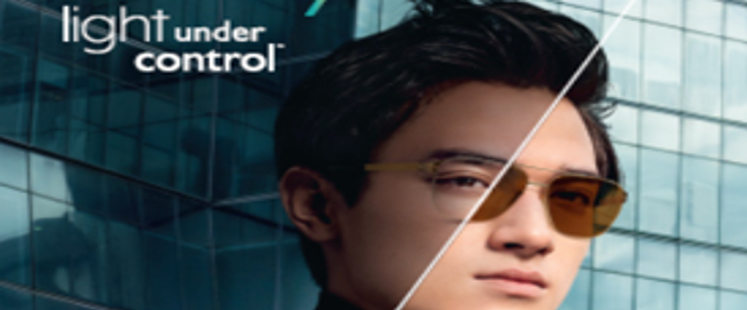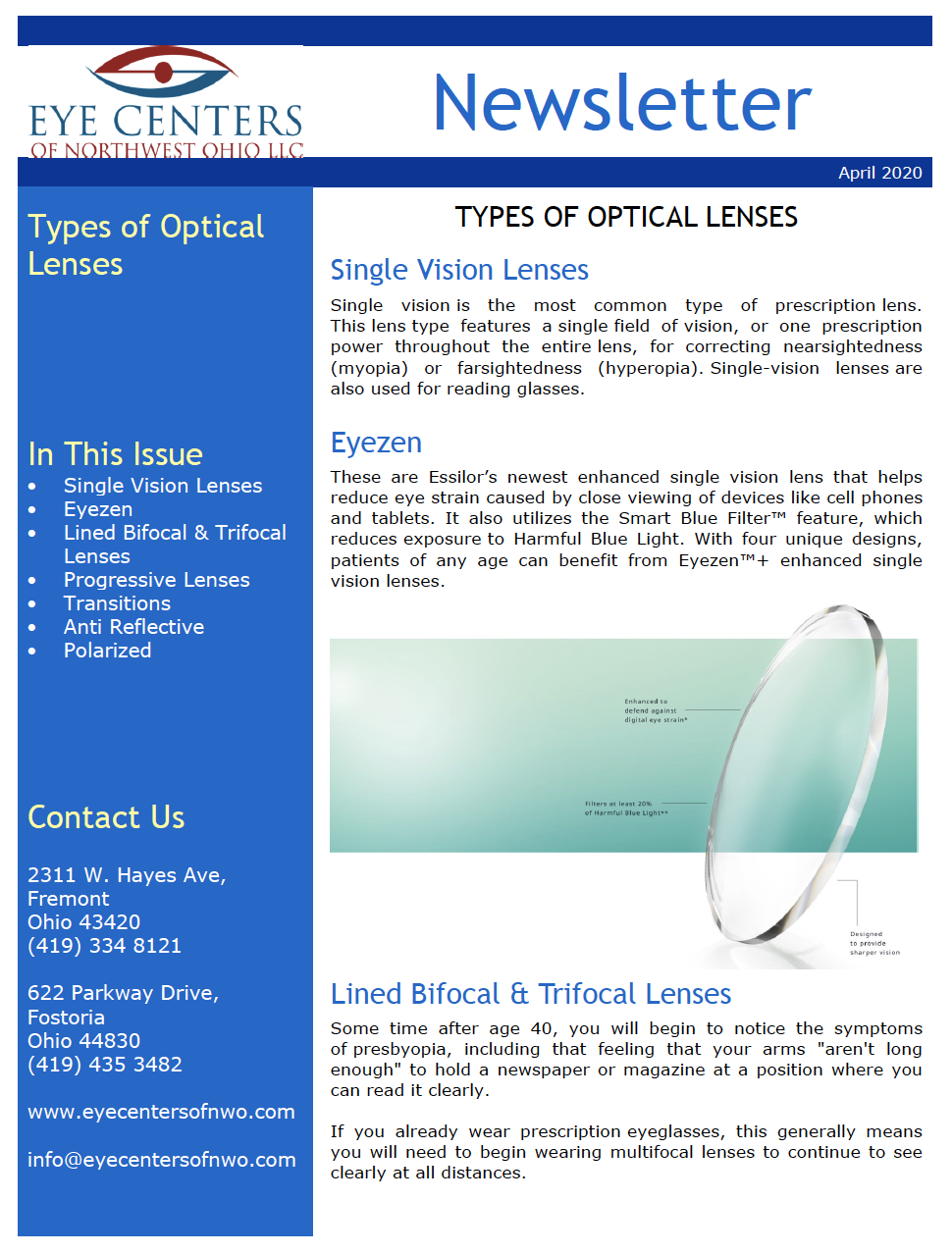April 2020 Newsletter
Types of Optical Lenses
Single Vision Lenses
Single vision is the most common type of prescription lens. This lens type features a single field of vision, or one prescription power throughout the entire lens, for correcting nearsightedness (myopia) or farsightedness (hyperopia). Single-vision lenses are also used for reading glasses.
Eyezen
These are Essilor’s newest enhanced single vision lens that helps reduce eye strain caused by close viewing of devices like cell phones and tablets. It also utilizes the Smart Blue Filter™ feature, which reduces exposure to Harmful Blue Light. With four unique designs, patients of any age can benefit from Eyezen™+ enhanced single vision lenses.
Lined Bifocal & Trifocal Lenses
Some time after age 40, you will begin to notice the symptoms of presbyopia, including that feeling that your arms "aren't long enough" to hold a newspaper or magazine at a position where you can read it clearly.
If you already wear prescription eyeglasses, this generally means you will need to begin wearing multifocal lenses to continue to see clearly at all distances.
While most presbyopes these days choose line-free progressive lenses, conventional lined bifocals and trifocals are still available.
A bifocal lens has one line, as below, and a trifocal has two lines which allows for intermediate vision as well as distance and near.
Progressive Lenses
“No Line” Lenses, also known as Progressive Lenses, will provide clear, comfortable vision without a line.
The upper portion of the lens is for distance vision. As you lower your eyes, the magnification increases gradually allowing you to see better at all distances.
Transitions
Transitions – these lenses are designed to darken in the presence of UV rays. This eyewear is designed to be worn indoors and automatically transition darker when exposed to UV rays.
Transitions Xtra Active – these lenses are designed to respond to natural light as well as UV rays. They will block 100% of the UVA and UVB rays. Unlike regular transitions, Transitions Xtra Active will darken behind the windshield of a car and has a slight tint to protect from bright indoor lighting.
Anti Reflective
These lenses are unique in that they cut down on the glare created on the lens. They provide clearer vision by allowing nearly 100% of the light to pass through the lens. AR treatments greatly reduce glare around lights at night that traditional lenses can cause.
Polarized Lenses
These lenses are a must for any outdoor enthusiast. These specialized lenses work to reduce the glare off the surface of objects. They protect against UV rays, resist scratches and are easy to clean.
See 20/20 in 2020 with the Eye Centers of Northwest Ohio
In This Issue
- Single Vision Lenses
- Eyezen
- Lined Bifocal & Trifocal Lenses
- Progressive Lenses
- Transitions
- Anti Reflective
- Polarized
Contact Us
2311 W. Hayes Ave,
Fremont
Ohio 43420
(419) 334 8121
622 Parkway Drive,
Fostoria
Ohio 44830
(419) 435 3482
Courtesy: Prevent Blindness
Courtesy: National Eye Institute, National Institutes of Health (NEI/NIH)
No Vision Insurance, No Problem. Join our Membership Program today!
Courtesy: The American Academy of Ophthalmology
For previous newsletters:








